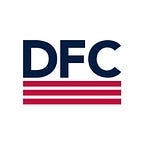By Andrew Herscowitz, Chief Development Officer, U.S. International Development Finance Corporation
The story of bringing electricity to every corner of the world is a two-sided story of both unprecedented progress in recent years, as well as daunting challenges that remain to reach the most remote populations.
Even as the global population grew, the number of people living without electricity fell from 1.2 billion in 2010 to 840 million in 2019, according to data from the World Health Organization. Despite those strides, there is reason for concern that progress could stall. Most of the communities that still lack a reliable source of electricity are located in parts of sub-Saharan Africa and Asia that are off-grid and are unlikely to benefit, at least in the short term, from new power plants coming online. Without innovative approaches to reaching these communities, some 650 million people could still lack a basic source of power to light their homes and power basic appliances in 2030, according to projections from The Rockefeller Foundation.
As America’s development bank, U.S. International Development Finance Corporation (DFC) recognizes insufficient electricity as one of the world’s greatest development challenges and has prioritized investments in renewable energy to expand access to sustainable, affordable electricity. This week, we are redoubling efforts to deliver power to off-grid communities in Africa and Asia with a Call for Applications for debt and equity financing, as well as political risk insurance to support distributed renewable energy projects. The Call for Applications is one of the new climate and climate-focused investment initiatives DFC is pursuing to help developing countries reduce emissions, increase renewable energy usage, protect ecosystems, and enhance resilience.
Unlike utility-scale power generation, distributed renewable energy generates power near the point of use and is particularly effective in reaching communities that are not connected to a central utility grid. This latest Call for Applications builds on a series of initiatives DFC has taken in recent months to support this last-mile power supply. Earlier this year, DFC announced a collaboration with the Shell Foundation to bring affordable renewable energy to more than five million people in low-income areas of Africa and Asia by 2025, in part by deploying grant funding from Shell to build a pipeline of businesses that deliver distributed renewable energy. A similar collaboration with The Rockefeller Foundation will seek to combine DFC financing with grants from other sources to expand investments in distributed renewable energy in underserved markets.
In regions of Asia and Africa where most off-grid communities are concentrated, this energy poverty poses a significant hurdle not only to quality of life, but also to the delivery of essential services such as healthcare, and to overall economic growth. In several countries including the Central African Republic and Chad, for example, less than 10 percent of the population has access to reliable electricity. Throughout Africa, an estimated 40 percent of health facilities do not have electricity.
The good news is that even small investments can go a long way to reaching targeted populations. In Chad, a $10 million DFC loan is supporting the distribution of solar kits and appliances to individuals, schools, health clinics, and small businesses. In India, DFC recently partnered with two local lenders to support lending to small businesses that are investing in rooftop solar, mini-grids, solar pumps, and other energy efficiency solutions. By turning the lights on one home or business at a time, these investments will help transform life and lay the groundwork for economic growth.
